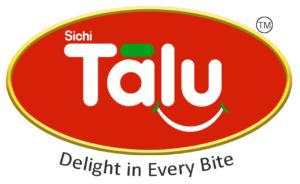The ready-to-eat food industry in India has seen a remarkable transformation over the years. From humble beginnings to becoming a significant segment of the food market, the evolution of ready-to-eat foods reflects changing lifestyles, technological advancements, and growing consumer demand for convenience.
1. Early Beginnings
The concept of ready-to-eat foods in India can be traced back to traditional snacks and preserved foods that were prepared for long journeys. Items like pickles, dried fruits, and packaged sweets were the initial forms of ready-to-eat foods, cherished for their convenience and long shelf life.
2. Technological Advancements
With advancements in food processing and packaging technologies, the ready-to-eat food sector began to expand. The introduction of retort packaging, which allows food to be sterilized and sealed in pouches, revolutionized the industry. This technology ensured longer shelf life without the need for refrigeration, making it easier for consumers to store and consume ready-to-eat meals.
3. Changing Lifestyles
The rapid urbanization and busy lifestyles of modern Indians have significantly contributed to the rise of ready-to-eat foods. With more people working longer hours and having less time to cook, the demand for convenient meal solutions has soared. Ready-to-eat foods offer a quick and hassle-free alternative, fitting perfectly into the fast-paced lives of urban dwellers.
4. Diverse Offerings
The evolution of ready-to-eat foods has also been marked by the increasing diversity of offerings. Today, consumers can find a wide range of options, from traditional Indian dishes like biryanis and curries to international cuisines, healthy salads, and gourmet meals. This variety caters to different tastes and dietary preferences, making ready-to-eat foods a versatile choice.
5. Health and Quality Focus
Modern consumers are more health-conscious, leading to a demand for high-quality, nutritious ready-to-eat meals. Companies like Talu are at the forefront of this trend, focusing on using fresh ingredients, maintaining high safety standards, and offering balanced meals that cater to health-conscious individuals.
6. Future Trends
The future of ready-to-eat foods in India looks promising, with continued growth and innovation. As technology advances further, we can expect even more convenient packaging, improved nutrition profiles, and greater sustainability. The industry is also likely to see more personalized meal options, catering to specific dietary needs and preferences.
In summary, the evolution of ready-to-eat foods in India reflects the dynamic changes in consumer lifestyles, technological progress, and a growing focus on health and quality. At Talu, we are proud to be part of this journey, providing our customers with delicious, nutritious, and convenient ready-to-eat meals that cater to the demands of modern living.

